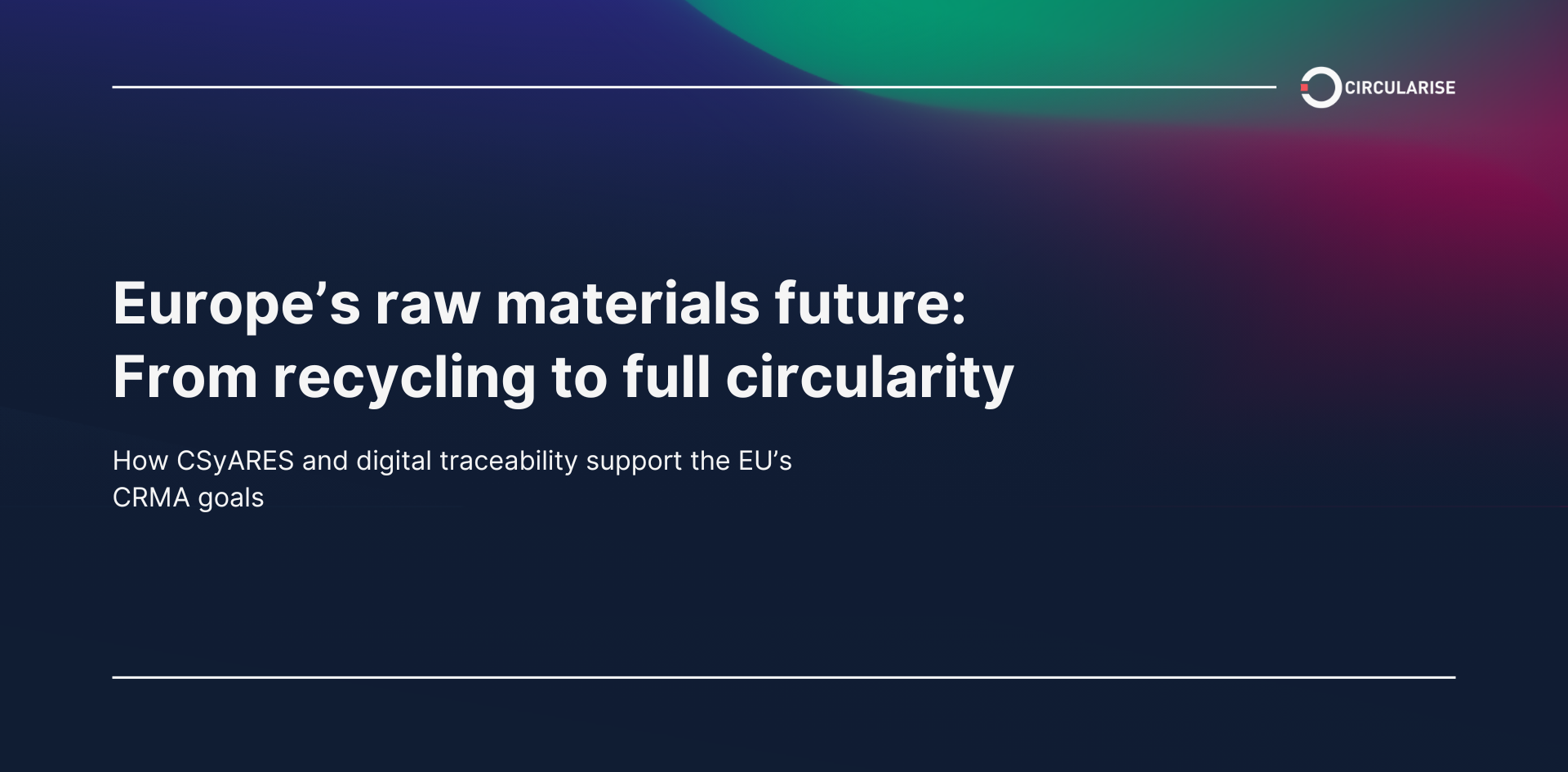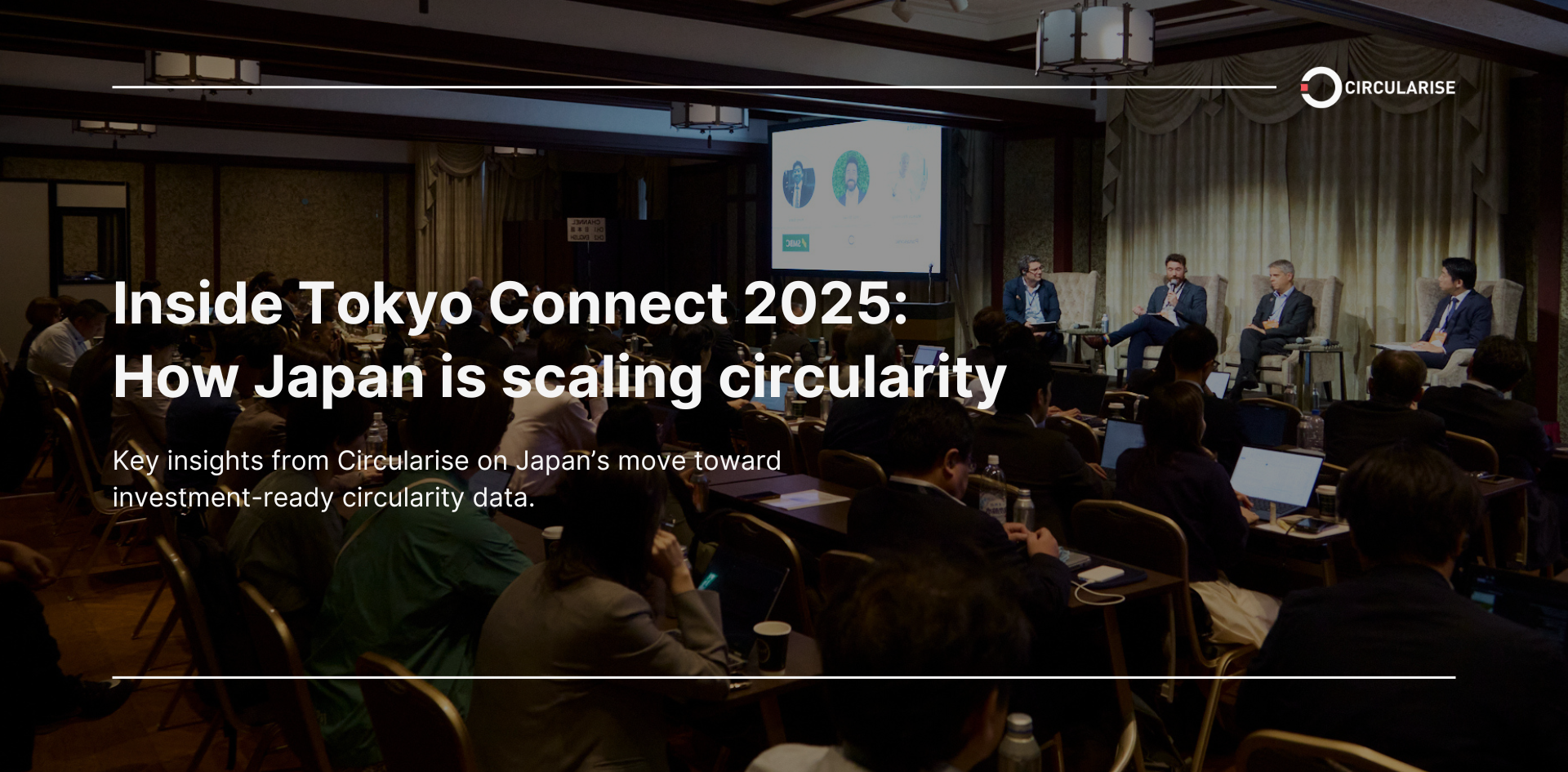The Conflict Minerals Regulation (or the Regulation on Responsible Minerals Sourcing) aims to ensure conflict-free sourcing of minerals and metals, as such materials often finance armed groups and cause human rights abuses. The regulation puts in place due diligence obligations for the sourcing of these materials. If these obligations are not fulfilled, importers risk receiving a legal order or fine. To circumvent the sanctions, companies have to follow the due diligence procedure.
This article delves into the EU Conflict Minerals Regulation, exploring critical aspects such as the definition of conflict minerals, their role and necessity, and the challenges associated with their extraction. It examines where conflict minerals are mined, the objectives of the regulation, its impact on businesses, and how mapping the supply chain with Circularise can provide effective support.
What are the four conflict minerals?
The term ‘conflict minerals’ refers to the minerals sourced from politically unstable areas1 — regions where armed conflict, human rights abuses, or other illegal activities are prevalent. The four minerals considered conflict minerals under the EU Regulation are:
- Tin (Sn): Often used in electronics and soldering components.
- Tantalum (Ta): Crucial in electronics, particularly capacitors in mobile phones, laptops, and other devices.
- Tungsten (W): A key component in manufacturing products like lightbulbs, and also used in high-stress environments like electronics.
- Gold (Au): Widely used in electronics, jewellery, and dental work.
Other names for ‘conflict minerals’ are ‘3TG’ or ‘responsible minerals’. Currently, the term 'responsible minerals’ is gaining popularity as it removes negative connotations.
Why do we need conflict minerals?
Conflict minerals are used in the production of many electronic devices, cars, jewellery1, and clean technologies. In a mobile phone, for example, tantalum is used to ensure the charging function, tungsten for vibration, tin for soldering connections, and gold for creating a circuit board. The demand for these products containing 3TGs has been growing, putting pressure on the mining of the raw materials4. The extraction of conflict minerals, however, has come under criticism due to its political significance.
What is the problem with conflict minerals?
Conflict minerals are typically extracted in areas with weak governance, where illegal mining and exploitation are common. The mineral mines and refining facilities are often controlled by armed groups, which spend the profits on weapons and ammunition1. Often, workers are in precarious conditions, using rudimentary tools and techniques to extract the minerals. These operations often involve practices that exploit workers or harm the environment. Forced labour, child labour, and violence are commonly reported in conflict mining operations.
At the same time, addressing the issue is a challenging undertaking due to the dispersed and global nature of mineral supply chains. Conflict minerals pass through complex global supply chains. These supply chains often include smelters, refiners, and traders, with companies not always able to trace the origin of the minerals back to their source. Smuggling and informal trading practices make it difficult to ensure the traceability and ethical sourcing of these materials.
For example, Apple, one of the leading technology firms, has 200 suppliers and 242 smelters and refiners. Similarly, Samsung also maintains a large supply chain to support its presence in global markets, therefore also engaging many smelters and refiners for its raw materials processing. As of 2023, the company totals 466 smelters and refiners, 42 of them mining cobalt. Both companies have a mining presence in countries such as the DRC, Rwanda, and the Philippines, which fall under the high-risk or conflict-affected areas, according to the Conflict Minerals Regulation.
Where are conflict minerals mined?
To make it easier for firms to identify the risks, the EU determined a list of conflict-affected or high-risk areas. According to the EU, conflict minerals are mined in regions which are characterised by1:
- Weak governance and law violations
- Ongoing armed conflicts
- A fragile post-conflict state
- A possession of sought-after minerals
Currently, the list of conflict-affected or high-risk areas includes 29 countries, of which some are Afghanistan, the Democratic Republic of Congo, Rwanda and the Central African Republic.
It's important to note that the list of CAHRAs is indicative and non-exhaustive. Companies are still required to conduct due diligence and comply with regulations even when operating in any conflict-affected regions, even if they are not explicitly listed. The nature of conflict is ever-changing, and risks can be concentrated at regional, local, or even individual site levels.

What is the aim of the EU Conflict Minerals Regulation?
The EU adopted the Conflict Minerals Regulation to:1
- Break the link between conflict and illegal exploitation of minerals
- Stop the export of conflict minerals to the EU, as well as its use by smelters and refiners
- Ensure EU importers meet international sourcing standards
- Support local communities
These aims are achieved by establishing due diligence requirements for the sourcing of the 4 minerals that are imported into the EU from the conflict-affected areas.
Who does the EU Conflict Minerals Regulation affect?
All companies sourcing conflict minerals are required to trace the origin of the materials under the EU Conflict Minerals Regulation. Companies must assess and manage risks associated with sourcing minerals from high-risk regions, and ensure their supply chains are not contributing to conflict or human rights violations.
The due diligence requirements directly apply to companies importing tin, tantalum, tungsten, and gold (3TGs) into the EU with an annual import volume above a certain threshold (see Appendix 1). These include both upstream firms (extracting, processing, and refining raw materials) and downstream companies (processing metals into a finished product). Minerals can take the form of mineral ores, concentrates, or be processed from other metals. Firms working with recycled metal or operating beyond the metal stage (e.g. sourcing finished components, distributing end-user products containing conflict minerals) are excluded.
The regulation also indirectly affects mine owners, smelters, and refiners as importers push for compliance with the responsible sourcing principles in their supply chains.
Parties outside of the scope of the regulation are encouraged to use the framework to showcase their sustainability efforts in reports, such as those required by the Corporate Sustainability Reporting Directive or other voluntary reports.

What are the requirements of the EU Conflict Minerals Regulation?
The EU Conflict Minerals Regulation forces importers to implement a due diligence scheme7, which includes following the 5 steps identified in the OECD Guidance (Articles 1-5), as well as establishing a system for demonstrating compliance6 (Articles 6-7).
- Management system obligations (Article 4)
The first requirement is to establish a management system in a downstream company designed to put the necessary responsible sourcing policies and processes in place.
- Risk assessment obligations (Article 5)
Importers are required to assess sourcing risks on the basis of the data collected through a traceability system.
- Risk management obligations (Article 5)
After identifying the threats, the importers are instructed to arrange processes to respond to risks and make long-term decisions regarding the supply of minerals.
- Third-party audit obligations (Article 6)
Importers are required to conduct audits of ‘flagged’ upstream smelters and refiners. The importer audit is not required when the smelters and refiners are included in the list created by the European Commission7.
- Disclosure obligations (Article 7)
After evaluating its supply chain practices, the importer must provide information about audit reports to their immediate downstream purchasers and the National Competent Authorities (NCA). The EU also requires businesses to publicly communicate their sourcing practices. While disclosing the reports, the importers need to be mindful of commercial confidentiality.
- Compliance & documentation obligations (Article 3)
Besides establishing an assessment and reporting system, the regulation requires importers to maintain the documents necessary to demonstrate compliance.
- Ex-post checks obligations (Article 11)
This documentation and access to premises should be granted whenever the authorities want to check compliance after the initial evaluation.

Ensuring these obligations are fulfilled is necessary to avoid strict sanctions. Download the guide for more elaborate descriptions of the obligations, as well as recommendations on how to fulfil them.
What are the sanctions?
A major risk associated with non-compliance is sanctions in the form of corrective measures and fines. After conducting inspections, the designated NCA will order a firm to address an issue6. Failure to introduce corrective measures will result in fines, with the severity of penalties differing across member states. In Germany, for example, the maximum fine is 50K EUR10. Local authorities can also introduce extra measures, such as the import ban in Finland or the “black list” of non-compliant companies in the Czech Republic.
Download the guide for more practical steps you can take to comply with the regulation.
The effectiveness of the Conflict Minerals Regulation
Since its enforcement in 2021, the EU Conflict Minerals Regulation has faced scrutiny regarding its effectiveness. A briefing paper by IPIS Research evaluated the regulation's implementation, identifying obstacles hindering its efficacy. Moreover, In October 2023, a coalition of NGOs issued a statement asserting that the EU Conflict Minerals Regulation is failing to achieve its intended goals. They argue that the regulation does not adequately address the complexities of responsible mineral sourcing and therefore, has not led to significant improvements on the ground.
In December 2024, the Democratic Republic of Congo (DRC) filed criminal complaints against Apple's subsidiaries in France and Belgium. The DRC accused Apple of incorporating conflict minerals sourced from regions plagued by armed conflict into its supply chain, despite the Conflict Minerals Regulation already being in place. Apple refuted these allegations, emphasising its directives to suppliers to avoid sourcing minerals from the DRC and Rwanda, and highlighted its auditing efforts to ensure supply chain integrity.
These critiques point to the broader systemic issues in ensuring compliance, with an emphasis on the ethical implications and practising due diligence. The ineffectiveness of the regulation has global repercussions impacting conflict-prone regions and international supply chains. The shortcomings of the Conflicts Mineral Regulation must be addressed for meaningful progress in global value chains.
Mapping the supply chain: How Circularise can help
Ensuring compliance with the regulation requires continuous tracking of the chain of custody of material from the mine of origin to the brand owner or even the end user.5 Due to the opaque nature of the supply chain, this is a significant undertaking and presents a web of challenges from resourcing and administration, to data integrity and intellectual property protection.
Companies should consider integrating digital traceability tools to overcome these challenges. One available solution is Circularise’s traceability platform. It allows companies to manage product traceability and share key insights into their products with other supply chain actors, all without risking sensitive data.
Circularise has extensive knowledge of sustainable mining. Together with industry partners, Circularise is developing the Circular System for Assessing Rare Earth Sustainability (CSyARES). This system makes credible upstream sustainability and LCA information available to the downstream actors. This certification ensures sustainability for rare earth elements while preserving confidentiality. With the help of Circularise, companies can perform due diligence.
If you want to learn more about why and how to comply with the EU Conflict Minerals Regulation, get our guide below.

Circularise is the leading software platform that provides end-to-end traceability for complex industrial supply chains. We offer two traceability solutions: MassBalancer to automate mass balance bookkeeping and Digital Product Passports for end-to-end batch traceability.
Manage product traceability and share key insights into your products with other supply chain actors, all without risking sensitive data.







